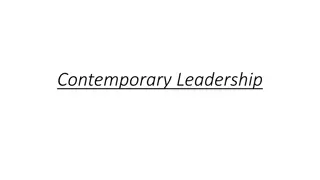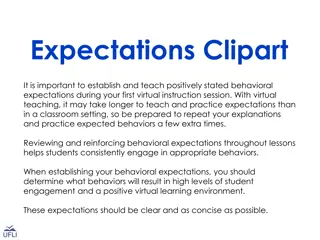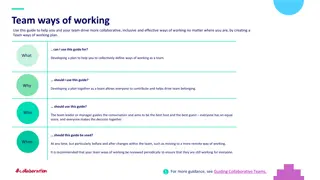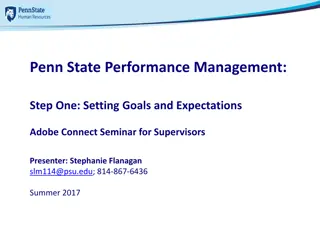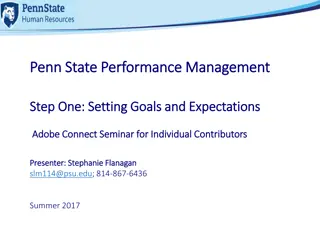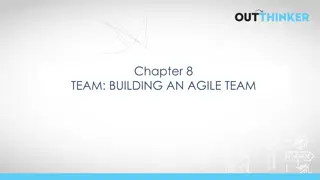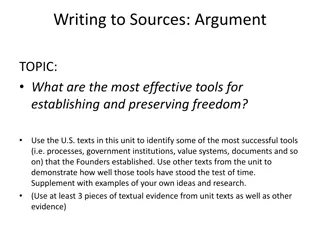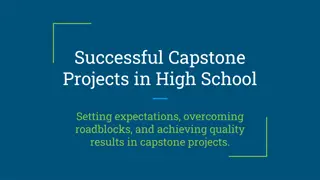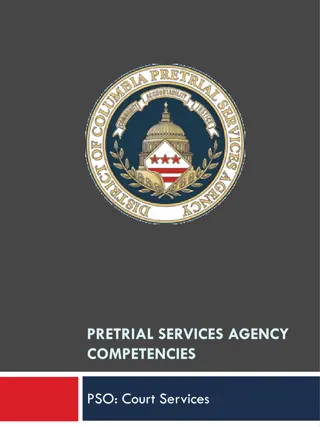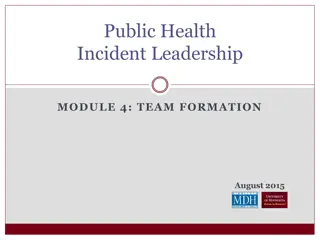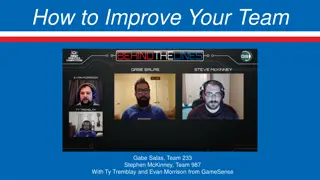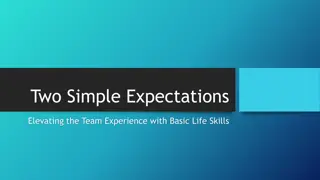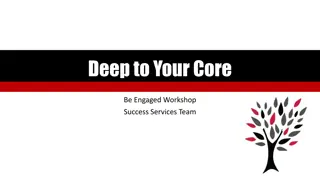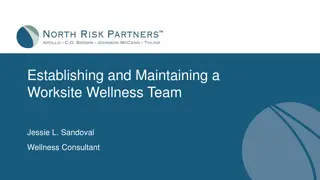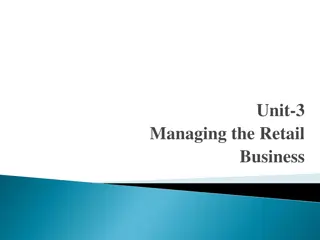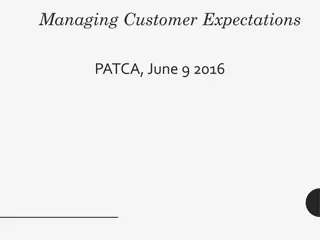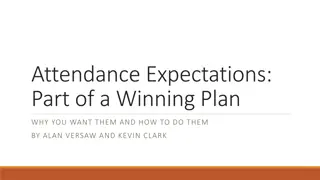Establishing Effective Research Team Expectations for Success
Explore the significance of teamwork in research through insights on forming multidisciplinary teams, establishing norms, and enhancing team performance. Key topics include defining team dynamics, stages of group development, and strategies for finding collaborative partners.
Download Presentation

Please find below an Image/Link to download the presentation.
The content on the website is provided AS IS for your information and personal use only. It may not be sold, licensed, or shared on other websites without obtaining consent from the author. Download presentation by click this link. If you encounter any issues during the download, it is possible that the publisher has removed the file from their server.
E N D
Presentation Transcript
Jump Start Your Research Team: Establishing Expectations and Norms to Ensure Success Presented by Holly Brower, PhD Wake Forest University School of Business
Goals for Session: Establish Context of bringing together multidisciplinary teams to conduct high impact research on aging Practices to convene teams Establishing effective foundation for new teams Effective team development Q & A
Introduction Not finance. Not strategy. Not technology. It is teamwork that remains the ultimate competitive advantage, both because it is so powerful and so rare. Patrick Lencioni, The Five Dysfunctions of a Team, Introduction, p. vii. (First lines of the book.)
Katzenbach & Smith Definition of Teams A team is a small number of people with complementary skills who are committed to a common purpose, performance goals, and approach for which they hold themselves mutually accountable.
Ideas for Finding Each Other With openness to potential partners outside your own discipline, read, listen, watch for publications, podcasts, seminars Papers and articles published within areas of interest Conferences, webinars, etc. Search for faculty in Coordinating Centers for Aging Research RCCN website contact numbers for coordinating centers
Tuckmans Stages of Group Development Forming Storming Norming Performing How do I best reconcile my ideas with the group? How can I sustain this level of success? Individual Issues How can I deliver what is expected? How do I fit in? Group Issues How How can we work as a cohesive team? How de we keep everyone motivated? do we identify the best ideas without fighting? Why are we here?
The Five Dysfunctions of a Team Patrick Lencioni
Trust Defined Trust is reciprocal faith in others intentions and behavior. Positive expectations from past behavior Positive expectations from clarity
Research on Trust in Teams When Trust Exists More openness More innovation & creativity More willingness to listen to each other Greater focus on goals More efficient communication When Trust is Missing Attempts at openness & honesty are suspect Members withhold ideas Energies diverted to suspicions Communication is guarded, ambiguous, distorted When trust goes out the door, suspicion comes innuendo. Chico Marx
What the Research Says about diverse teams Very good at generating ideas and making decisions Lots of diverse perspectives Two [diverse] heads are better than one Experience more conflict Less effective at implementing their decisions ..unless Deep-level diversity is actively unearthed Team members work hard to understand each other s perspectives
Three Types of Conflict Task Conflict Process Conflict Relationship Conflict Who don t I enjoy working with? What do I not like about teammates? What s the task? What s the goal? What s our purpose? How will we do it? What process will we use? Who will do what?
Research on Team Conflict Teams that Fear Conflict Have boring meetings Create back-channel politics Allow personal attacks to thrive Ignore controversial topics Fail to tap into all perspectives Waste effort with posturing and interpersonal risk management Teams that Engage Conflict Have lively, interesting meetings Extract and exploit the ideas of all team members Solve real problems quickly Minimize politics Put critical topics on the table for discussion The Five Dysfunctions of a Team by Patrick Lencioni, Jossey-Bass, 2002.
Achieving Commitment COMMITMENT BUY IN CLARITY
A team that fails to commit: Creates ambiguity among the team about direction and priorities Watches windows of opportunity close due to excessive analysis and unnecessary delay Breeds lack of confidence and fear of failure Revisits discussions and decisions again and again Encourages second-guessing among team members The Five Dysfunctions of a Team by Patrick Lencioni, Jossey-Bass, 2002.
A team that commits: Creates clarity around direction and priorities Aligns the entire team around common objectives Develops an ability to learn from mistakes Takes advantage of opportunities Moves forward Embraces change and continuous improvement Changes direction without guilt The Five Dysfunctions of a Team by Patrick Lencioni, Jossey-Bass, 2002.
How to build commitment To encourage emotional commitment to the team Encourage interaction and cooperation Emphasize common interests & characteristics Point out outside threats Encourage informal interactions To encourage task commitment to the team Hold productive team meetings Update and clarify the team s goals Give every team member a vital role Celebrate each member s contributions Remind members of their need for each other for goal attainment
Embracing Accountability Hot Tip: Direct, peer-to-peer is far more effective in high performance teams than outside accountability, incentives, and consequences.
Accountability: Hot Tip #1 You cannot hold people accountable for expectations you did not tell them you had.
Accountability: Hot Tip #2 It is not fair to hold people accountable for preferences, only for expectations.
Accountability: Hot Tip #2B Expectations and Feedback should be directly linked to team success metrics.
A TEAM CHARTER A Tool to Capitalize on the Benefits of Diversity Purpose: to accelerate team development, clarify roles and expectations, increase individual accountability, and reduce the possibility for detrimental team conflict.
Its a wrap Questions, Observations, Concerns Thank you!! Onward and upward!



